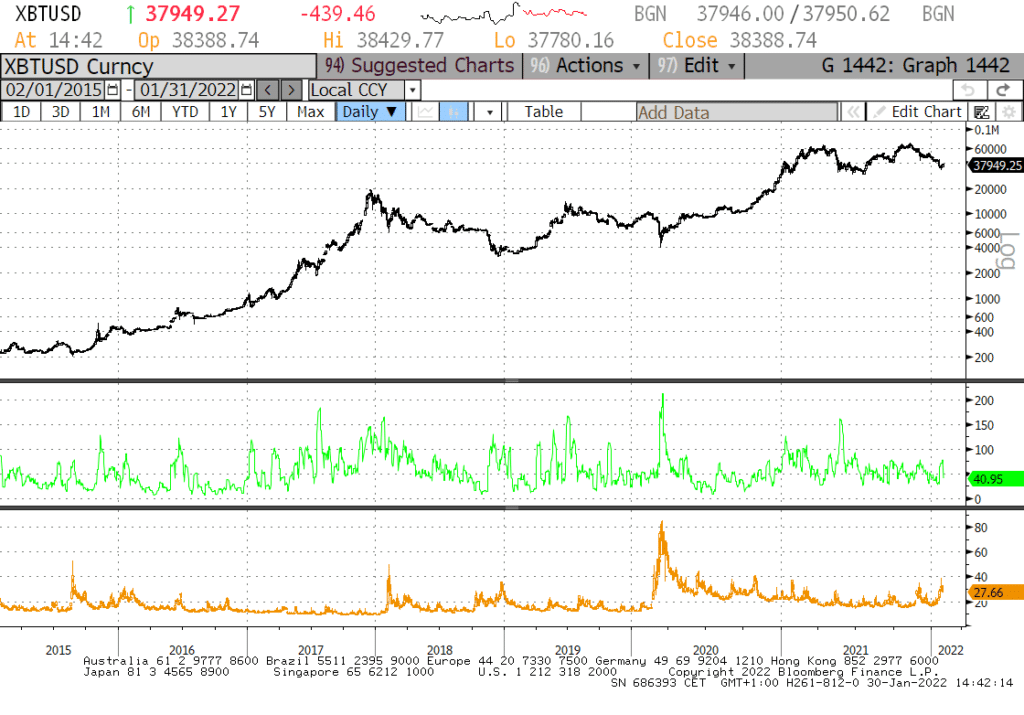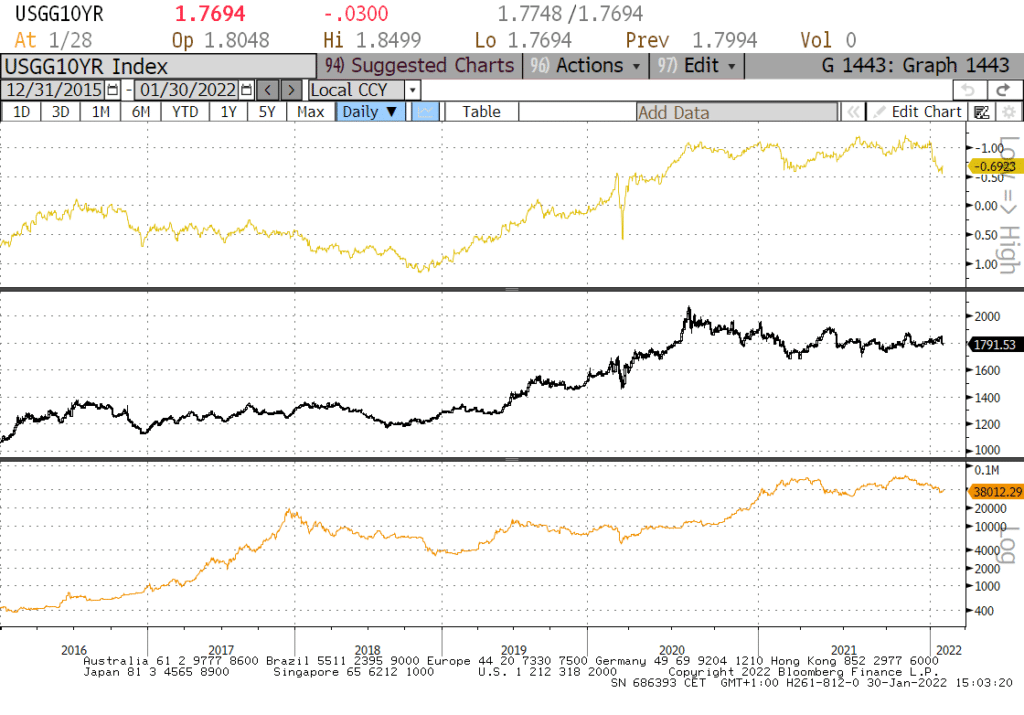The Cryptonomist interviewed the team of Consultique, an Italian company based in Verona that focuses on independent financial advice. Every year, the company organizes the famous Fee Only Summit event on these topics and slowly they are also getting interested in the crypto world.
That’s why we decided to have a chat with their team to understand how the financial market is going and what is the correlation with the cryptocurrency market.
Interview with Consultique
What do you think about the performance of Bitcoin in recent months?
The market momentum is very peculiar as the dynamics specific to cryptocurrencies must be added to the general context of financial markets. In the last two months the volatility of the stock market, and of the technology segment in particular, has been high, with two flare-ups in early December and in these days.
Historically, we can see how volatility spikes in the stock markets (which are usually associated with index pullbacks) are also found in cryptocurrencies and Bitcoin in particular. This tells us that during risk-off periods, i.e. when investors are afraid of future prospects, the crypto world also sees an outflow of capital.
In the chart below we can observe for example the period at the end of March 2020 (Covid crisis) where both the stock market and Bitcoin record a relevant spike, which corresponded to important price reversals. Something similar can also be observed in early 2018, when a reversal in the stock market was also reflected in Bitcoin prices. However, in the second part of 2017, Bitcoin registered very high volatility values in the pump phase (in the year it went from $1,000 up to $20,000) as well as in the December 2017 dump that have no correspondence in the stock markets.
In 2019, on the other hand, Bitcoin experienced at least 4 spikes in high volatility that were essentially unmatched in equity markets, which remained at exceptionally low levels of volatility throughout the year.
Moreover, it is worth noting that the “normal” short-term volatility of the stock market is around 20% on an annualized basis, while that of Bitcoin is essentially double that (40% on an annualized basis)

From our point of view, it is very important to separate the normal decorrelation of Bitcoin with respect to other asset classes (stocks, bonds and commodities) from the events in periods of tension because we can define cryptocurrencies as a decorrelating element but not as a portfolio protection.
In fact, the perception of the correlation between stock markets and Bitcoin is largely distorted by the fact that we focus on emotional factors on the moments of greatest growth or greatest decline, i.e. precisely when all investors are driven by extreme optimism (FOMO) or extreme fear, and this across all investment alternatives.
Regarding the specific trend of Bitcoin in the last period, the components related to geopolitical tensions in some key mining countries and the cost of energy must also be taken into account. As a result, a delicate situation from a cryptocurrency-specific perspective has been compounded by a general deleveraging of investor risks.
What are your thoughts on Bitcoin as a store of value?
Many analysts talk about Bitcoin as the digital replacement for what gold currently represents in the financial world, namely a store of value. This is because the Bitcoin creation mechanism ensures a deflationary dynamic, much like traditional gold mining.
We are in a period where we observe a very sustained inflation (7% in the USA) that is pushing Central Banks to stop the expansionary policy and money production of the last years. However, while gold has at least preserved its value, Bitcoin has experienced significant losses.
Furthermore, as can clearly be seen from the chart, physical gold has a clear correlation (inverse, note that the first chart has the y-axis reversed) with US real rates, i.e. when real rates (i.e. net of expected inflation) fall, gold increases in value.
The meaning of this correlation is quite clear: gold (like Bitcoin) does not pay interest, so when US government bonds pay higher interest than expected inflation, holding gold is unwise and is especially so when real interest rates are higher; conversely when real interest rates fall or even become negative, it is worth holding gold.
We note that it is too early to find any trace of this trend on the Bitcoin chart, a sign that investors in general do not (yet?) consider Bitcoin as a value reserve asset against inflation. In fact, it is quite clear that gold has acquired this function over time due to a mix of intrinsic characteristics (rarity, durability and malleability) and cultural elements (first in ancient religions and then in the economy, as a currency and even today, outside the gold standard since central banks hold large reserves precisely in gold).
Bitcoin has the intrinsic characteristics necessary to constitute a store of value, but it does not (yet?) have the cultural elements, which then constitute trust by the broader public.

While in the case of catastrophic events, such as a total loss of confidence in the financial system, Bitcoin might constitute a form of value preservation, many doubts remain as to whether it can be an effective hedge against inflation.
In many more problematic contexts, however, it constitutes a safer landing place. Consider, for example, the devaluation of the Turkish Lira due to hyperinflation and the questionable monetary policies of the Turkish central bank. In these cases, Bitcoin, like gold or hard currencies (Euro, Dollar, Yen) would have been a good store of value for Turkish citizens who invested in it.
We look forward to testing Bitcoin’s capabilities in the near future should a period of sustained inflation persist.
What role do you see for cryptocurrencies as a form of investment?
Given the evolution of the crypto market in recent years, it has become impossible to ignore this world, and an independent financial advisor, unencumbered by commercial sales logic, must learn about this market segment.
In addition, for investors who have a risk profile that allows a serene investment in high-risk instruments, a component of cryptocurrencies in the portfolio is a possibility that can increase the expected return in the long term.
The post Consultique: the correlation between the stock and crypto markets appeared first on The Cryptonomist.

















